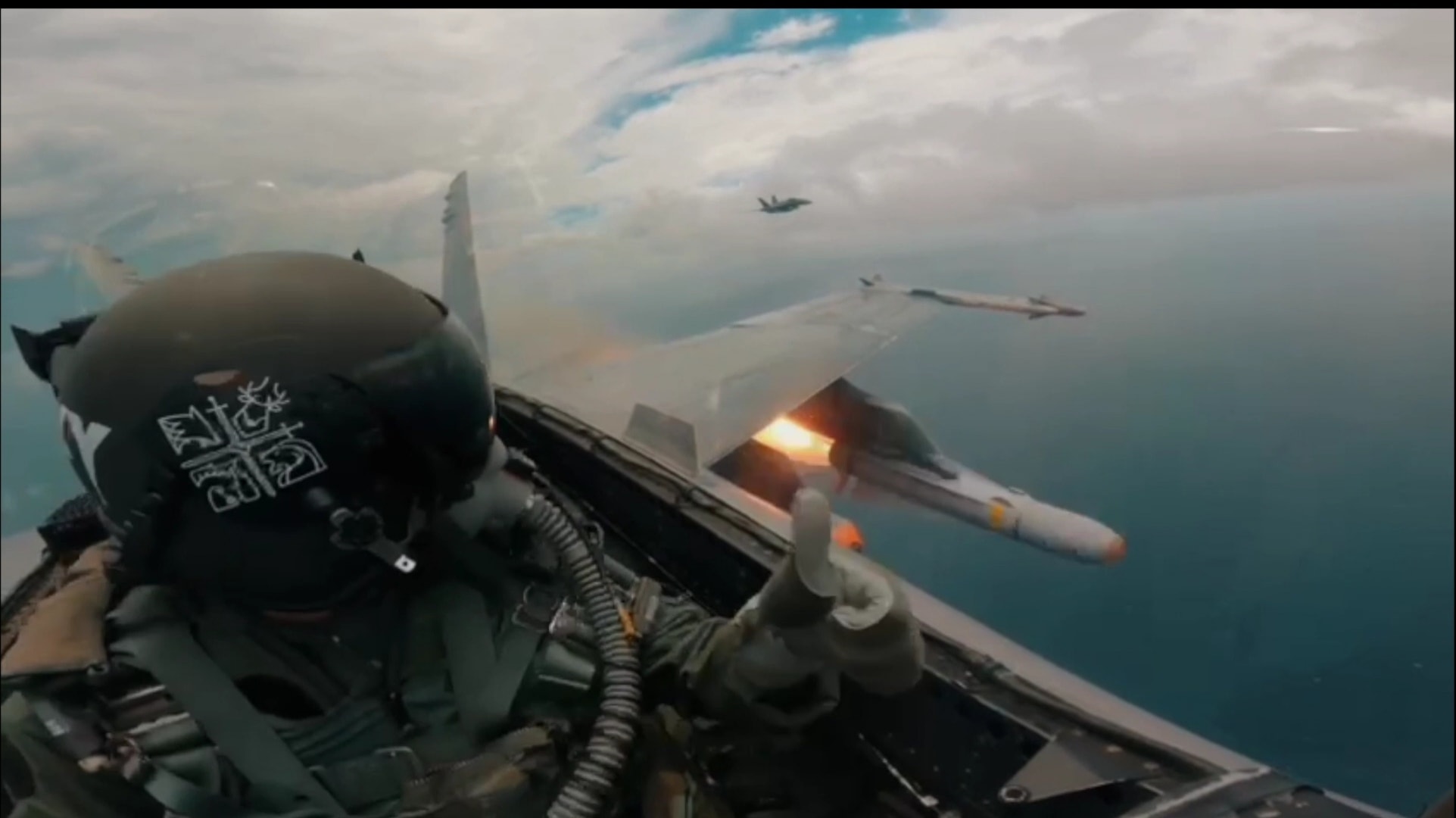
SHAH ALAM: Back on the saddle again, Hornet edition. RMAF has taken full acceptance of the first F/A-18D Hornet – tail number M45-01 – which had undergone the “Local Planned Maintenance 12 Years” (LPM-12Y). The acceptance ceremony was conducted at the Butterworth air base on January 5.
RMAF chief General Mohd Asghar Goriman Khan witnessed the acceptance of M45-01 between No. 18 Squadron commanding officer Leftenant Colonel Khamizan Morsidi and Rosebank Engineering senior manager Paul Pingnam. Tail number M45-01 was recently introduced with a new 25th year anniversary scheme.
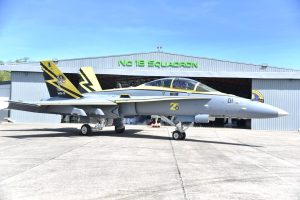
As previously reported RMAF had planned to conduct the depot level maintenance of the Hornet in Australia but it was cancelled due to the pandemic. In the release below, RMAF said rising costs was also one of the reasons for the decision to conduct the maintenance locally in 2021. It is interesting to note that RMAF itself publicly revealed that M45-01 was still flying in March 2021 so it is likely the work on her started after that.
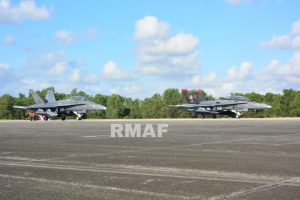
According to RMAF, the Butterworth airbase engineering branch and No 18 Squadron worked with Rosebank Engineering and local company, G7 Global Aerospace to conduct the depot level maintenance. It must be noted that RMAF stated that Rosebank Engineering was previously known as RUAG. A Google search showed that RUAG sold the whole stake of its Australian unit, to Rosebank in September 2022. RUAG had purchased the stake from Rosebank in 2012. At DSA 2021, it was made known that G7 was awarded a RM71.1 million for its industrial collaboration programme with Rosebank for relating to the procurement of spares, maintenance, repair and overhaul, training and technical for RMAF aircraft components for the Hornets, S-70 Black Hawk, S-61 Nuri and C-130 Hercules.
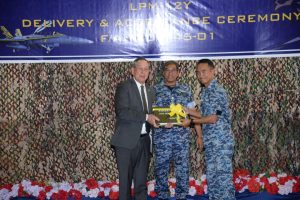
Malaysian Defence was told that some of the aircraft components including those off the Hornets were also repaired in Australia likely at one of the Rosebank Engineering facilities.
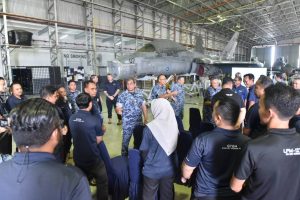
Release from RMAF:
TUDM TERIMA PESAWAT F/A-18D M45-01 SETELAH MENJALANI PENYELENGGARAAN PENUH DI BAWAH PROGRAM LPM-12Y
BUTTERWORTH, 5 Januari 2023 – Tentera Udara Diraja Malaysia (TUDM) telah mengadakan Majlis Penerimaan Pesawat F/A-18D, yang sebelum ini menjalani proses penyelenggaraan (depot level) bertempat di Hangar Hornet Readiness Center (HRC), Pangkalan Udara Butterworth hari ini. Majlis penerimaan ini telah disempurnakan oleh Panglima Tentera Udara, Jeneral Tan Sri Dato’ Sri Mohd Asghar Khan bin Goriman Khan TUDM yang menyaksikan serahan dan penerimaan melibatkan senggaraan pesawat F/A-18 D daripada pihak Syarikat Rosebank Engineering yang diwakili oleh Senior Manager, Mr Paul Pingnam kepada Leftenan Kolonel Khamizan bin Morsidi TUDM, Pegawai Memerintah No 18 Skuadron.
Setelah 24 tahun pengoperasian pesawat F/A-18 D pada tahun 2021, pihak Markas Pemerintahan Bantuan Udara (MPBU) telah merancang bagi melaksanakan penyelengaraan ‘depot level’ ke atas pesawat ini. Penyelengaraan ini melibatkan pemeriksaan menyeluruh terhadap struktur pesawat, penilaian kerosakan dan baik pulih kerosakan struktur yang disebabkan haus dan lusuh atau kemerosotan material ke atas pesawat akibat persekitaran operasi.
Secara amnya pesawat F/A-18D ini perlu menjalani penyelenggaraan di luar negara. Walau bagaimanapun, penyelenggaraan ini tidak dapat dilaksanakan berikutan situasi Covid-19 yang melanda negara mengakibatkan peningkatan kos serta limitasi lain. Bagi memastikan kesiapsiagaan TUDM pada tahap yang tinggi, TUDM telah mengambil pendekatan dengan melaksanakan penyelenggaraan ‘depot level’ yang dikenali sebagai “Local Planned Maintenance 12 Years” (LPM-12Y). Ini merupakan kali pertama dilaksanakan di Malaysia yang melibatkan kerjasama TUDM dan industri tempatan. Penyelenggaraan ini melibatkan Cawangan Kejuruteraan Pangkalan Udara Butterworth, No 18 Skuadron, Syarikat Rosebank Engineering (dikenali sebelum ini sebagai RUAG) dan G7 Global Aerospace.
Mengimbau semula pelaksanaan LPM-12Y, penyelenggaraan ini mengambil masa selama hampir setahun enam bulan mulai 26 Julai 2021 sehingga 5 Januari 2023. Selain penyelenggaraan ‘depot level’, pelaksanaan LPM-12Y ini memberikan manfaat khususnya juruteknik pesawat untuk mengambil pengalaman serta menimba pengetahuan dalam penyelenggaraan pesawat secara lebih menyeluruh di samping memenuhi keperluan juruteknik bagi program senggaraan pada masa akan datang. Dalam majlis ini juga, turut disampaikan Sijil Penghargaan kepada lima (5) anggota TUDM yang terpilih dalam “Integrated Programmed Team” (IPT) yang bekerja bersama selama setahun setengah daripada Managing Director G7 Global Aerospace, Datuk Rosdi bin Mahmud. Usaha bersepadu ini juga bertepatan dengan Tonggak Ke-5 Perintah Ulung PTU Ke-20 iaitu Peningkatan Keupayaan TUDM Melalui Kolaborasi Bersama Industri Pertahanan Tempatan dalam membangun dan mempertingkatkan kemampuan angkatan udara. Di dalam jangka masa panjang, akan menjimatkan kos-kos pembangunan angkatan atau penyelenggaraan aset-aset TUDM serta mewujudkan sinergi baharu secara berterusan dengan industri pertahanan tempatan
— Malaysian Defence


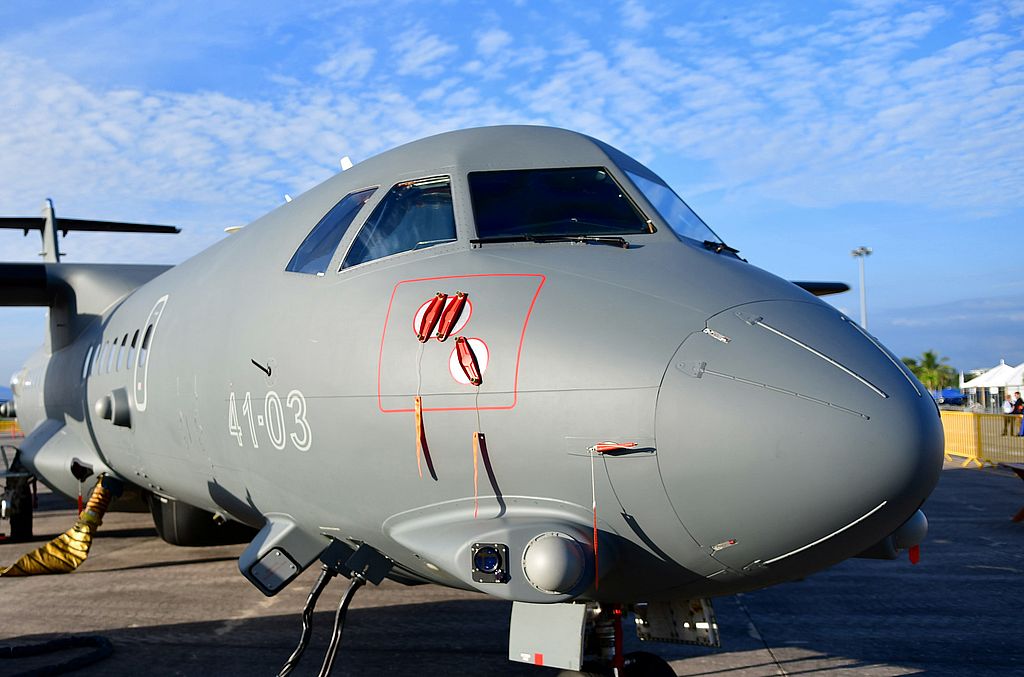
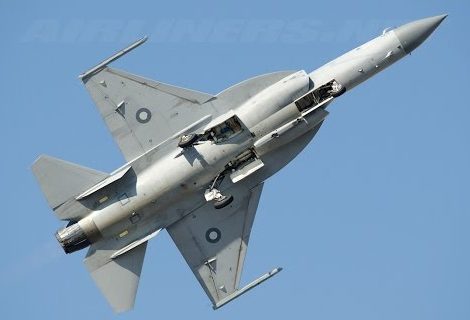
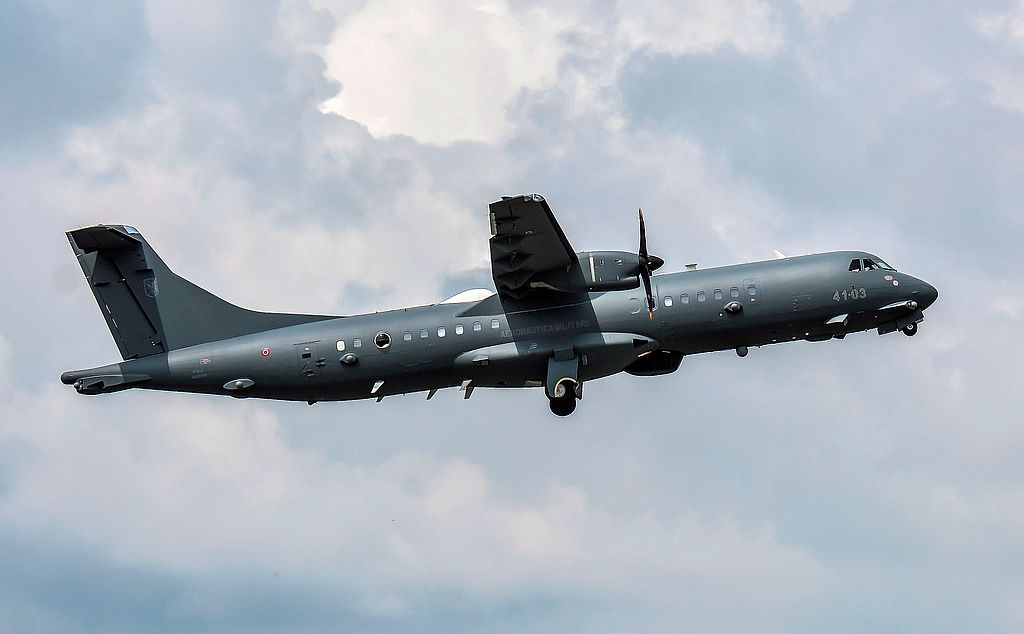
so does that mean if we get additional F/A-18 from kuwait we can upgrade them in house? From looking at the spec kuwaiti hornets are ancient
hopefully the menhan can convince both the FM and PM to expedite these additional hornets and use pmx goodwill to acquire them as cheap as possible
Their Hornets are likely better shape than us as theirs are maintained by Boeing. This allowed them to adhere to the proper maintenance and timely upgrade schedules
Alex – ” to acquire them as cheap as possible”.
And to obtain the funding to adequately sustain them [will get more maintenance extensive as they further age] and to get ordnance and ground support equipment. Also hope that the tight fisted pencil pushers don’t use this as an excuse to further delay the MRCAs.
Better shape ≠ higher overall specifications.
They are maintained by Boeing staff, but did not have the 25x upgrades like RMAF Hornets do. It has a different lower spec radar and different lower spec engines. RAAF A/B units got all the modification similar to RMAF hornets.
Never about specification with the Kuwait Hornets. Always about getting more planes to bridge the gap created by Mig-29 retirement and delays in the MRCA program. Perhaps the RMAF will find some money in the operating budget for upgrades. There are other F-18 operated by other countries that make for better targets. But presumably the only one that is currently available and available as charitable donations are the Kuwait F-18s? For example, Australia was selling their upgraded F-18A/Bs when they first took delivery of their F35s. Of course the Australians were selling, not donating.
Never about specification with the Kuwait Hornets. Always about getting more planes to bridge the gap created by Mig-29 retirement and delays in the MRCA program. Perhaps the RMAF will find some money in the operating budget for upgrades. There are other F-18 operated by other countries that make for better targets. But presumably the only one that is currently available and available as charitable donations are the Kuwait F-18s? For example, Australia was selling their upgraded F-18A/Bs when they first took delivery of their F35s. Of course the Australians were selling, not donating.
Never mind if the Kuwaiti Hornets are not 25x. They can do the more mundane duties and the original 8 don’t have to be worked so hard. It’s a no brainer IMHO.
Hulubalang – They are maintained by Boeing staff, but did not have the 25x upgrades like RMAF”
Great but so? Unlike our Hornets the Kuwaiti ones did not miss scheduled overhauls or depot level checks.
That was the point made by Marhalim.
Hulubalang – “RAAF A/B units got all the modification similar to RMAF hornets”
Also a few other things sadly missing on ours.
Kel – “Always about getting more planes to bridge the gap created by Mig-29 retirement and delays in the MRCA program”
Not really. It is part of a longstanding plan to increase the number of Hornets rather than to make up for the loss of the Fulcrums. It is also not directly related to delays in the MRCA programme. As it stands there never was a replacement for the F-5s [Gripen was the main contender] per see and neither as it stands for the Fulcrums.
Kel – “5s. Of course the Australians were selling, not donating”
The Kuwaitis will as it stands will also be selling and not transferring without cost.
Better to get new LCA with lower operating cost per flying hours rather old hornet for mundane duties.
Can we know what is the current flying hours of the M45-01?
Also the average flying hours of the fleet?
A few years ago it is said that all of TUDM Hornets has flown less than 3,000 hours each.
If its true that the RMAF Hornets had only been flown for 3000 hours a few years ago, I doubt it’s more than 4000 hours now
Nimitz – “Better to get new LCA with lower operating cost per flying hours”
Good point. Cheaper to sustain and is not thirty over years old. The question is whether it will come with a AESA and a targeting/pod? In addition to their age the ex Kuwaiti Hornets will also take years to come as that’s how long the State and Defence Department approval process
takes. There is also the fact that we will spend as minimum as possible on them.
Azmie,
There’s an article out there in which a Hornet pilot states how many hours are clocked on average annually.
@kel
Aussie Hornets are high mileage ones. What we need isn’t the latest specs (which can still be upgraded) but longer airframe lifespan. We need lower mileage birds since it will enable us to use them longer than just for a few years, then we will get our money’s worth. Mind you the industry knows these Kuwaiti Hornets are the best preserved ones that will come offline in the near future so if we don’t act fast it will be presold sooner than later.
Actually yes, better to get new LCA than old F-18s. Back to the questions of 1) Can RMAF operate solely single engines (e.g. Poland’s decision to swap twin-engine for single-engine, and Singapore before the arrival of F-15s)?, and 2) Have single engines form the workhorse of the air force (e.g. US, China, Korea, Taiwan, Singapore) – forget about getting more twin engines which stands at 26 today, and focus on getting more single engines (e.g. the 36 LCA)?
No. For various reasons the RMAF still sees a need for twin engine MRCA but not necessarily a dual seater one.
I am afraid the LCA cannot replace all the mundane tasks of the Hornets. All Hornet pilots probably have to do X hours of flying or training every month to keep their skills up. So why not use the lower spec. Hornets. Also air policing in the northern peninsula is probably the responsibility of Butterworth AFB rather than the LCAs based in Labuan, if they are to replace the Hawks.
Tom Tom – ”I am afraid the LCA cannot replace all the mundane tasks of the Hornets. ”
No idea what your definition of ‘mundane tasks” is but the LCA can perform certain roles in certain operation conditions in lieu of a MRCA. Like everything else the LCA must not be required to punch above its weight category.
Tom Tom – ”All Hornet pilots probably have to do X hours of flying or training every month to keep their skills up.”
All pilots are required to maintain certain hours in order to maintain currency.
Tom Tom – ”So why not use the lower spec. Hornets.”
Are they really ”lower spec”? Even if they are; does it make a difference or impact their actual capabilities at a platform level?
Some of the differences of Kuwait Hornets
Radar APG-65 (RMAF APG-73)
Engine F404-GE-400 (RMAF F404-GE-402 EPE, 10% more power)
RAAF hornets also have the same, but they regularly upgraded them and changed their radars from APG-65 to APG-73
Right now many are thinking that LMS operating cost of RM1,200 per hour is excessive.
Wait till they know that the Hornet operating cost is about RM70,000 per hour.
Does it mean we should not have more Hornets? No.
So what does it mean then?
We should have more LCA that we could afford to fly everyday to patrol our airspace in peacetime and also for QRA (the so called mundane tasks). Save the Hornets when shit really hits the fan. Just use the Hornets sparingly as what we have done for the last 25 years. When something like Lahad Datu or worse happens that is when we bring out those hornets to bear.
We cannot use the Hornets sparingly as their pilots and WSOs need to fly them enough so they will be good in operational missions. Apart from the flight crews, the technicians and engineers also need the experience to fix them as otherwise in a serious situation, the aircraft might ended non serviceable
NATO standard fighter flight hours are minimum 180 hours in last 12 months. USAF fighter pilots usually log more than 300 hours per year.
If RMAF Hornets flown 3000 hours in last 20 years, it means that on average just 150 hours flown on each airframe every year, well below NATO standards. Clearly they are not being used for regular operations.
I do know of whole squadron whose pilot and technician currencies have expired as they have not flown for more than 2 years. But that is for later i guess.